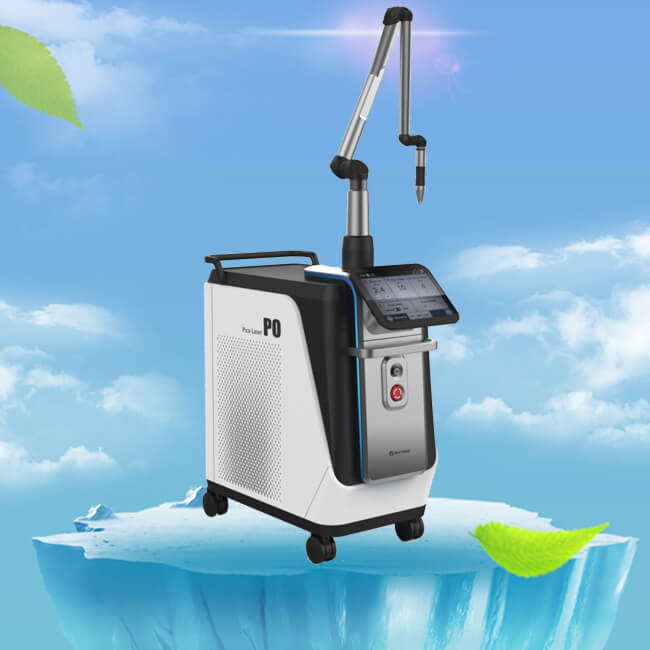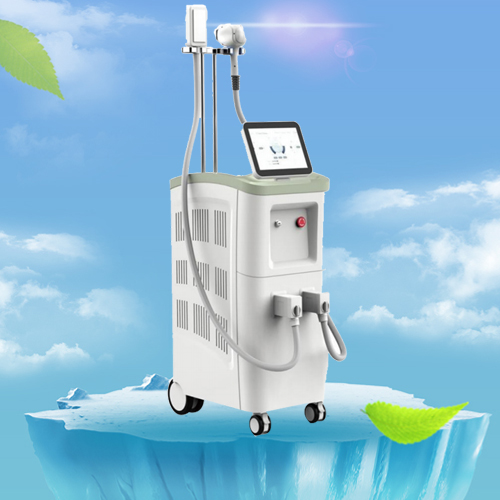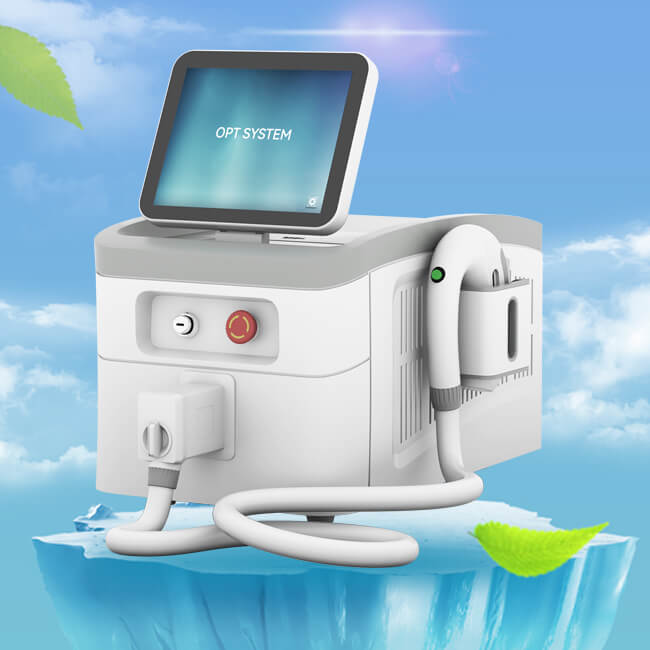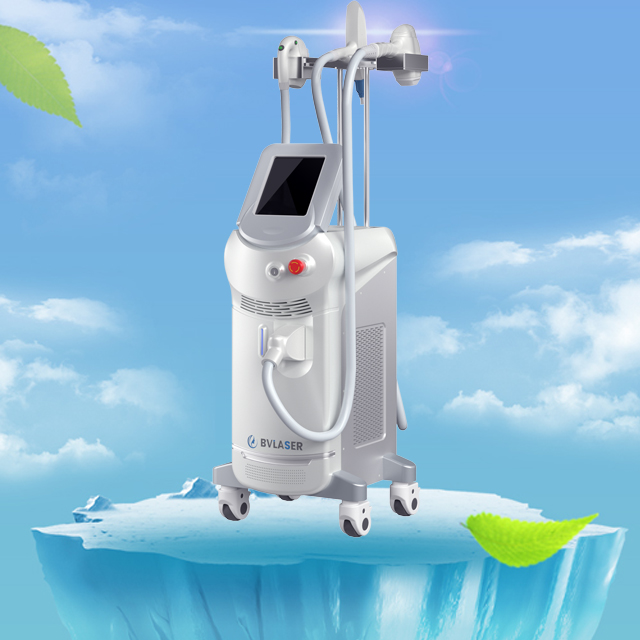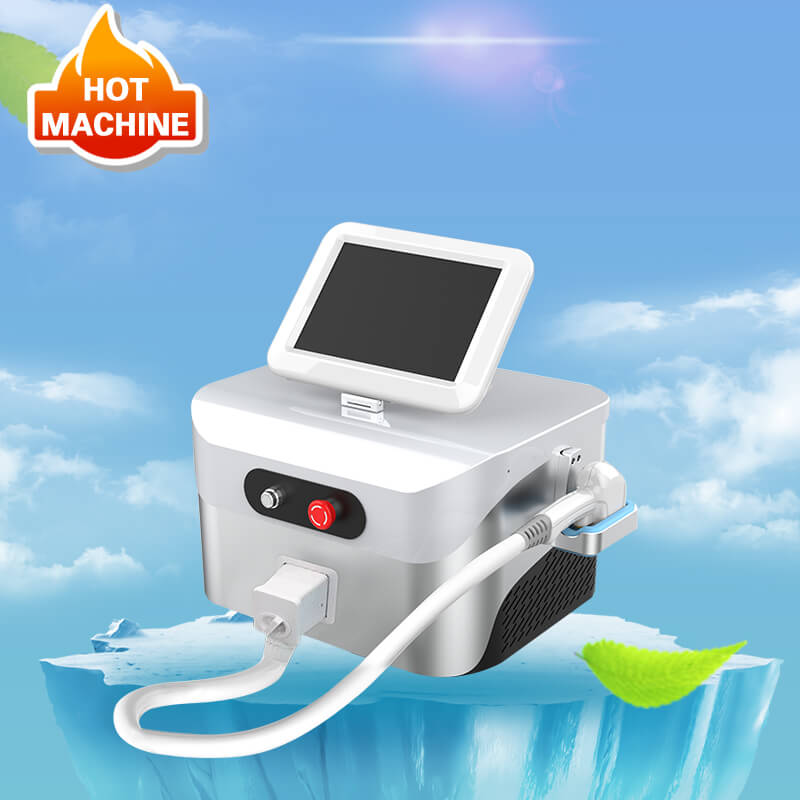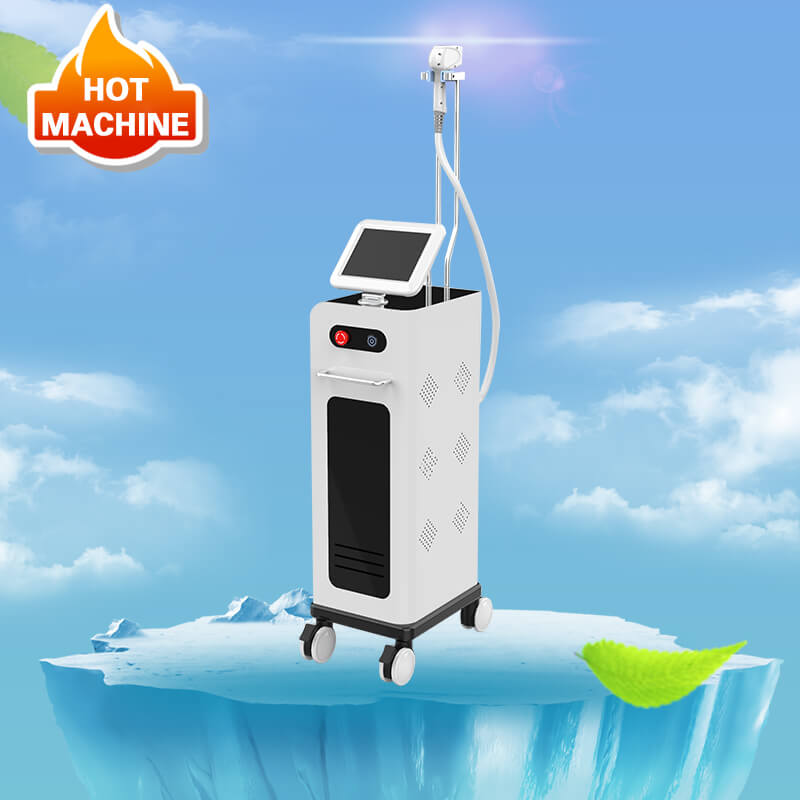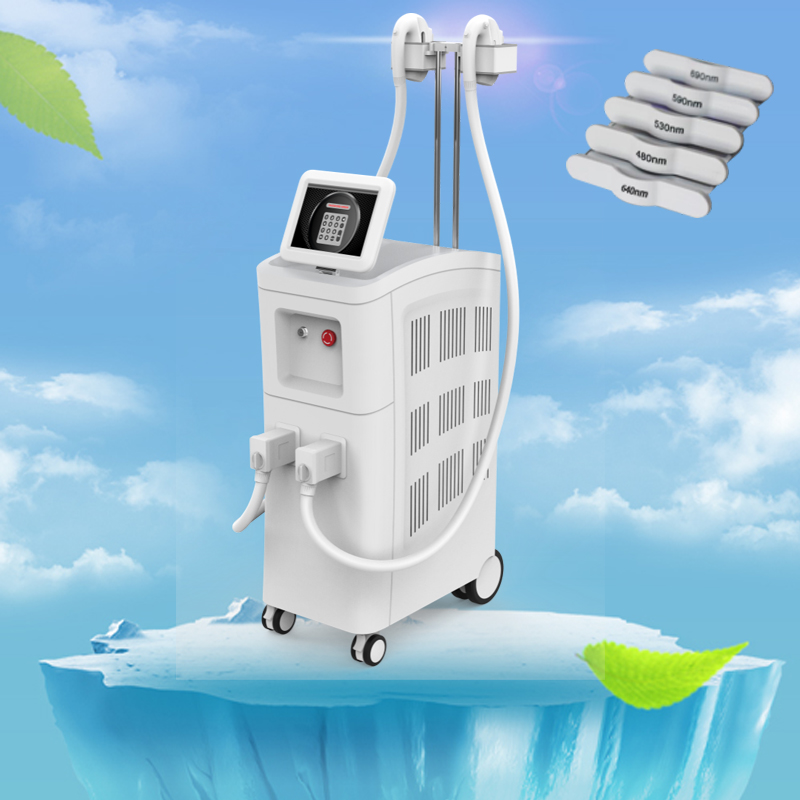What you should know about erbium laser skin resurfacing
Author:baishilf Time:2025-04-28 16:32:40
As we age, signs of the passing of time can appear on the face, such as the development of fine lines and wrinkles, the appearance of age spots, and increased skin laxity. Scarring from infected acne breakouts or severe injury can mar the skin, and benign and malignant lesions may develop on the skin due to sun damage. Previously, many patients falsely believed that to achieve complete facial rejuvenation, you needed to visit a plastic surgeon for a facelift, which can have significant side effects and risk for major adverse events. Luckily, a safe and effective alternative to plastic surgery, which helps reverse the signs of the natural aging process with limited downtime necessary: the Erbium laser resurfacing treatment.
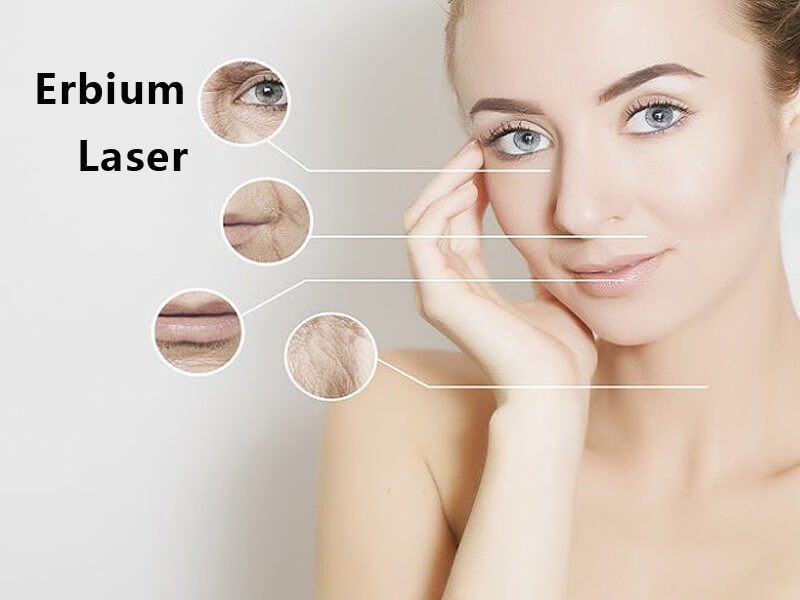
The Erbium glass laser is a fractional ablative laser designed for laser resurfacing and skin rejuvenation. The ablative nature of the laser means that the outer layer of skin is removed, which triggers the natural healing process to promote skin cell turnover, revealing healthy, clear, and tight skin as the treated area heals. The light energy can also penetrate deep into the dermis, boosting the production of new collagen and treating skin conditions from the inside out. And, compared to other ablative lasers like the carbon dioxide laser, less recovery time is necessary post-treatment, and the risk of side effects is lower.
Erbium glass fractional fiber laser 1550nm machine resurfacing is an ablative laser treatment option that removes the outer layer of skin (epidermis) and causes controlled damage to the inner layer of skin (dermis) to rejuvenate the skin for an overall more youthful appearance. Used with varying wavelength intensities, the Erbium laser can be used for superficial resurfacing or medium-depth resurfacing on the face, hands, neck, and chest. The treatment can address several skin conditions to reduce hyperpigmentation, improve the appearance of acne scars and injury scarring, eliminate fine lines and wrinkles, tighten the skin, remove malignant lesions, and even out skin tone and texture. Compared to other ablative lasers, such as the carbon dioxide laser, the Erbium laser requires less recovery time and less risk of adverse events.
The Erbium laser, also known as the Er: YAG ablative laser, works via the emission of light energy that affects the skin in two ways: skin resurfacing on the epidermal layer of skin and thermal damage to boost collagen production in the dermal layer of skin. On the skin’s surface, or epidermis, damage caused by the laser vaporizing the treatment area triggers the body’s natural healing process, leading to skin cell turnover and skin rejuvenation to improve skin texture and tone, reduce the appearance of acne scars and surgery scars, and eliminate hyperpigmentation caused by sun damage. The light energy also penetrates the deeper layers of skin, with the penetration depth dependent upon the wavelength of energy emitted. New collagen production helps to tighten the skin, reduce the appearance of fine lines and wrinkles, and improve skin tone. With the fractional laser properties of the Erbium Glass, wrinkles, hyperpigmentation, and scarring in the treated area can be explicitly targeted without damaging the surrounding tissue.
What is the procedure for Erbium laser skin resurfacing?
The first step of the Erbium laser resurfacing treatment is to schedule a consultation appointment with a board-certified dermatologist will begin by examining the treatment area and discussing your aesthetic goals to determine if the Erbium laser is the best treatment to meet your needs. Not all patients are good candidates for ablative laser treatment, as some patients may be at a higher risk of developing post-inflammatory hyperpigmentation, hypopigmentation, or post-treatment cold sores. Patient safety is the priority when undergoing treatment.
The Erbium laser resurfacing procedure will begin with the skin and applying a local anesthetic to the treated area. In the weeks leading to the treatment session, recommend reducing sun exposure and avoiding exfoliating treatments, creams, or serums, such as chemical peels and topical retinoids. Depending on the laser energy intensity needed, dermatologist may employ other forms of sedation, such as anesthesia, to ensure patient comfort during treatment. The amount of time necessary for the procedure will depend on the size and scope of the treatment area. If only a portion of the face is treated, the process usually takes between 30 and 45 minutes.
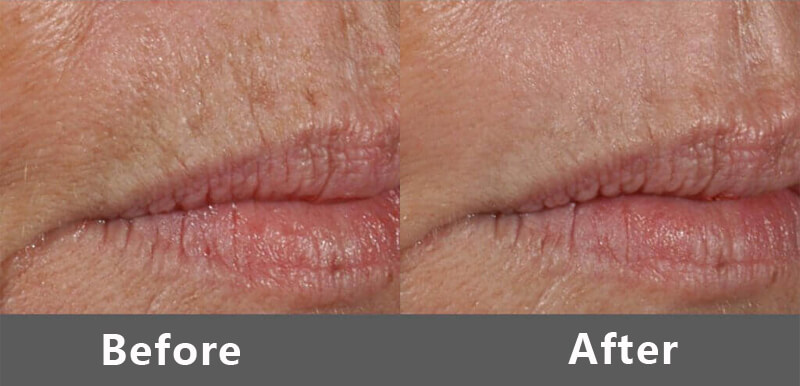
Who is a good candidate for the Erbium glass laser?
A good candidate for the Erbium glass laser resurfacing treatment is a patient looking to improve the appearance of fine lines, wrinkles, acne scars, surgical scars, hyperpigmentation, or sun damage, tighten the skin, and remove benign or malignant lesions. Generally, the Erbium laser is safest for use on patients with lighter skin types, such as the Fitzpatrick skin types I and II, as patients with darker skin are at a higher risk of burns, scarring, and post-inflammatory hyperpigmentation, which is when dark spots form on the skin. The American Board of Cosmetic Surgery recommends that patients prone to developing cold sores and fever blisters avoid Erbium laser resurfacing, as the treatment can exacerbate the conditions. Patients on acne medication, such as Accutane, should be cautious about receiving Erbium laser treatment, as a medication containing isotretinoin can slow the healing process, prolonging recovery time. During your initial consultation with your dermatologist, it is best to inform her of any medication you are taking or any pre-existing conditions to ensure that Erbium laser treatment will be safe and effective.
What are the benefits of Erbium laser skin resurfacing?
Erbium laser skin resurfacing treatment has many benefits and can help to address a range of cosmetic concerns, reversing signs of the natural aging process and improving skin tone and texture. Compared to other ablative lasers, such as the carbon dioxide laser (CO2 laser), the Erbium laser has comparable cosmetic results with less downtime necessary and fewer adverse events, like post-inflammatory hyperpigmentation. The Erbium laser can treat specific areas of the skin with fractional laser technology, allowing for a more targeted approach to treatment and leaving the surrounding tissue unharmed. Studies have shown that this also decreases the recovery time, allowing for fewer side effects.
What does the Erbium laser do?
The Erbium laser was first FDA-approved in 1996 as a resurfacing procedure for the epidermal layer of skin. The system effectively treats various skin conditions, ranging from benign pigmentation on the skin to malignant lesions to fine lines and wrinkles. Different possible settings for laser energy intensity allow the Erbium laser to provide superficial resurfacing, which requires minimal downtime, and deep dermal resurfacing, which provides visible, long-lasting results with more recovery time. When the wavelength of laser energy is emitted at the treatment area, the light reacts with the water in the skin, causing controlled damage to the epidermis and dermis, triggering the body’s natural healing response. As a result, collagen production and skin cell turnover increase, revealing new, healthy, more evenly textured skin.
What is the Erbium laser used for?
The Erbium laser can treat various skin conditions, rejuvenating the skin and clearing the face of blemishes. The treatment can be used to:
*Eliminate hyperpigmentation from the skin, including sun damage, dark spots, and age spots.
*Reduce the appearance of fine lines and wrinkles, particularly those around the eyes and mouth.
*Reduce the appearance of acne scars, surgical scars, and injury scars.
*Correct skin texture irregularities.
*Tighten the skin by decreasing skin laxity.
*Eliminate lesions on the skin, including malignant lesions.
Depending on the skin condition and the patient’s skin tone, the Erbium laser can achieve different treatment depths, making it very versatile.
What type of laser is the Erbium laser?
The Erbium laser is a fractional ablative laser that uses light energy to cause controlled damage to the epidermis and the dermis, reversing signs of the natural aging process, such as wrinkles, age spots, and irregular skin texture. The treatment vaporizes the epidermis – or outer layer of skin – which triggers the body’s natural healing response and the production of new collagen. The damage done to the outer layer of skin is what categorizes the Eribum laser as “ablative” rather than “non-ablative.”
Is the Erbium laser ablative?
Ablative lasers are defined as lasers that remove the top layer of skin for total skin resurfacing. In contrast, non-ablative lasers do not remove or affect the outer layer of skin. Instead, non-ablative lasers generate thermal energy, which creates micro-injuries in the dermis, helping to improve the appearance of the skin without causing any damage to the surrounding tissue. Ablative lasers are highly effective at resurfacing the skin and provide patients with dramatic results in as few as one treatment session. On the other hand, non-ablative lasers often require several treatment sessions to be visibly effective. However, while ablative lasers will provide patients with immediate, dramatic results, the recovery time following ablative laser treatment is much more significant, whereas non-ablative lasers require minimal downtime.
Is the Erbium laser painful?
The treatment process for the Erbium laser involves the removal of the outer layer of skin to rejuvenate and resurface the skin, achieving a more even skin tone and texture. Due to the ablative nature of the Erbium laser procedure, there is a risk of pain and discomfort during the treatment and post-treatment during the recovery process. However, dermatologist has many methods to increase patient comfort during the treatment, including localized anesthesia or sedative. Following the treatment, dermatologist will provide patients with aftercare instructions, including skincare products like moisturizer and broad-spectrum sunscreen, to keep the skin hydrated during healing.
Does the Erbium laser hurt?
The Erbium laser can be painful, but dermatologist will apply or administer anesthesia before the procedure to minimize patient discomfort. Pain during and post-treatment will vary depending on the intensity of the laser treatment. A more superficial resurfacing in a smaller area will not require as much treatment time or downtime, and the side effects of a more superficial resurfacing are mild. A more intense treatment session with a more concentrated laser emission can cause more pain during the treatment itself, and dermatologist will administer a more general anesthesia or numbing agent. Recovery time following the treatment may also be more significant, with redness and swelling lasting up to several weeks.
What are the side effects of Erbium laser resurfacing?
As with any ablative laser, there are side effects associated with the procedure that may persist for days or weeks post-treatment. Patients often experience redness and swelling in the treated area in the first couple of days after the procedure. In the following days, the skin may start to peel and become itchy, but it is essential to avoid scratching or rubbing at the area. Applying a moisturizer to the treatment site will be vital in creating a hydrated environment for the treated area to heal. Even after the outer layer of skin has recovered, redness may persist for as many as three months post-treatment. Other potential side effects of the Erbium laser treatment include:
*Bleeding
*Redness
*Swelling
*Scarring
*Post-inflammatory hyperpigmentation
*Acne breakouts.
How long does it take to heal from the Erbium laser?
With an ablative laser, the healing process can take some time as the epidermal layer of skin reforms. Specific side effects, such as redness and swelling, may persist for as many as three months after treatment, remaining red even after the skin has healed. The Erbium laser takes advantage of the body’s natural healing response to trigger collagen production, which helps to improve skin tone and texture for a rejuvenated, youthful appearance. Patients should start to see full treatment results within three to eight weeks post-treatment as new collagen production increases.
How long does the Erbium laser last?
Erbium laser resurfacing treatment is a long-lasting solution that results in as few as one treatment session. Patients looking to eliminate the appearance of fine lines, wrinkles, acne scars, and hyperpigmentation, improve skin tone and texture, and tighten the skin can turn to the Erbium laser for dramatic results. The number of treatments necessary will depend on the patient’s specific aesthetic goals, as some may require additional treatment sessions. The Erbium laser resurfacing treatment can be repeated once every six to twelve months to maintain the treatment results.
Does the Erbium laser really work?
The Erbium laser is an effective treatment for various skin conditions, including hyperpigmentation, coarse skin texture, acne scars, surgical scars, fine lines, wrinkles, and skin tightening. Compared to the CO2 laser, Erbium laser has a shorter recovery time associated with the treatment and a lower risk of severe side effects. In a study comparing the CO2 laser and Erbium laser, researchers found that the Erbium laser is just as effective as the CO2 laser with as little as half the needed recovery time.
Does the Erbium laser tighten skin?
The Erbium laser can tighten the skin to combat skin laxity. As we age, the production of the structural proteins collagen and elastin begins to decrease, leading to increased skin laxity and the onset of fine lines and wrinkles. The Erbium laser causes controlled damage to the dermal layer of the skin, which boosts the production of new collagen, giving the skin more structure for a full anti-aging effect. Dermatologist may also use Thermage laser treatment for exceptionally high skin laxity. This non-ablative laser uses radiofrequency laser energy to gently heat the inner layer, tightening the skin without downtime.





